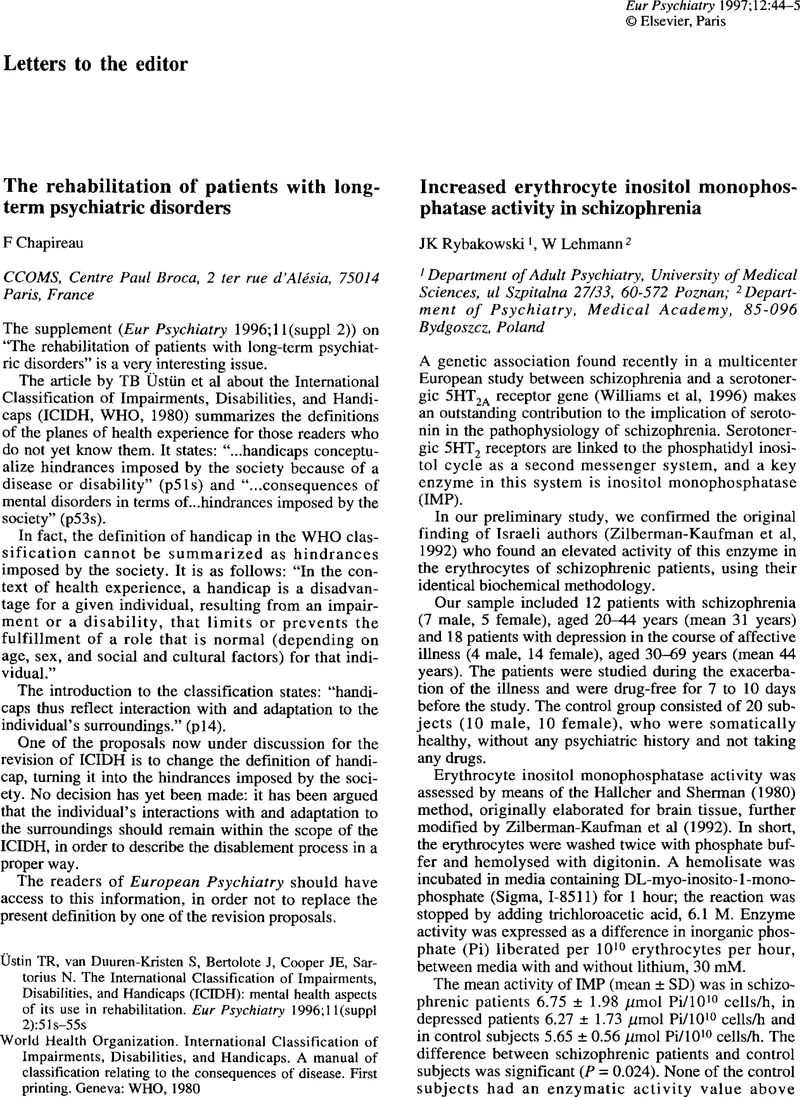Crossref Citations
This article has been cited by the following publications. This list is generated based on data provided by Crossref.
Rybakowski, J.K.
and
Lehmann, W.
1997.
Aumento de la actividad de la inositol monofosfatasa de los eritrocitos en esquizofrenia.
European psychiatry (Ed. Española),
Vol. 4,
Issue. 7,
p.
487.
Dietrich-Muszalska, Anna
2015.
Studies on Psychiatric Disorders.
p.
43.




Comments
No Comments have been published for this article.